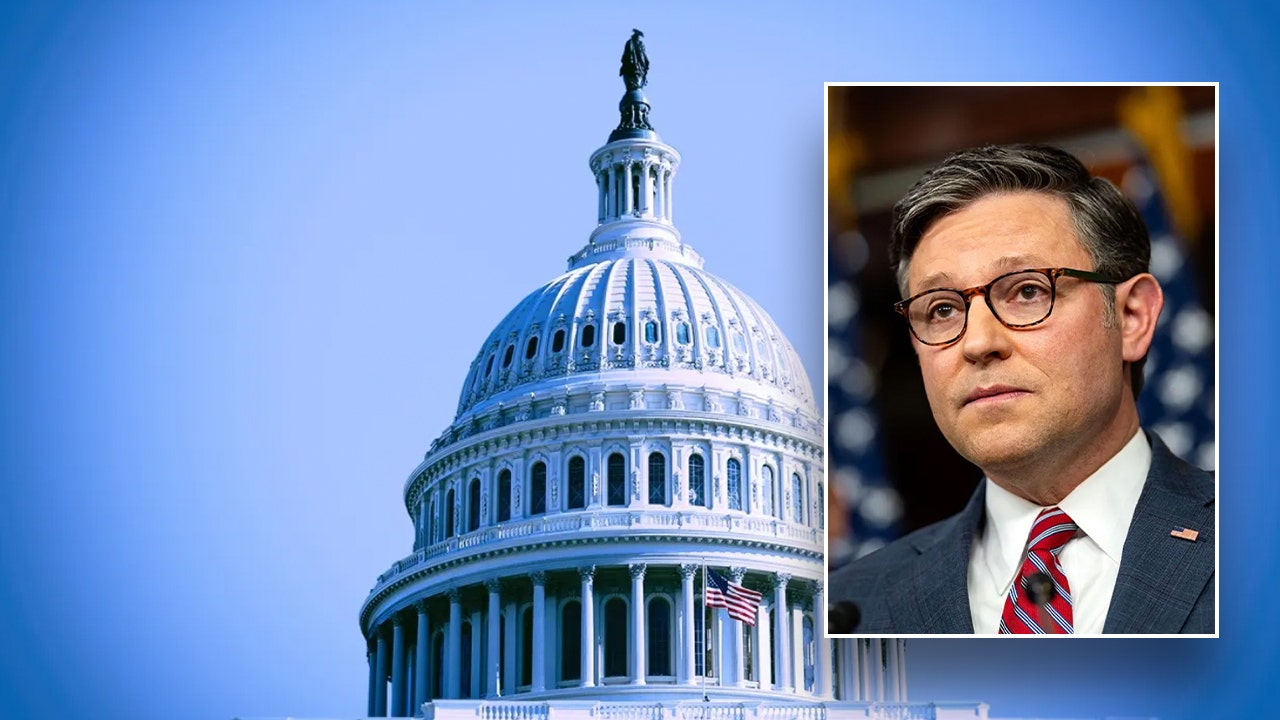North Dakota
Districts in Tennessee, North Dakota, Maryland Vote to Keep Books on Shelves | Censorship News

Review committees decided to keep challenged books on the shelves in districts in Maryland, Tennessee, and North Dakota; two new grassroots organizations to fight book banning were started by Texas parents and grandparents across the country, respectively.
Citing Parental Choice, North Dakota District School Board Votes to Keep ‘Not Age-Appropriate’ Library Books on the Shelves | KFYR
A committee of school staff, administrators, and community members in Williston, ND, reviewed 25 books. No titles were removed. Some will trigger a parental alert if a student checks it out.
Tennessee District School Board Votes to Keep a Challenged Book in Schools | WPLN News
The Sumner County (TN) Schools board voted not to ban graphic memoir Hey, Kiddo, which tells the story of the author’s childhood living with his grandparents, a missing father, and a mother suffering from addiction. The review committee acknowledged in its report that the book contains “rough language” but found that the book’s message outweighed the concerns.
Maryland District Committee Retains 34 of 35 Challenged Books, Sets Limits on Two | Frederick News-Post
In the final results of a 35-book review process that took more than a year Frederick County (MD) Public Schools (FCPS) announced it would remove Triangles by Ellen Hopkins from libraries in the school system and take Crank by Hopkins and Empire of Storms by Sarah J. Maas out of library circulation at the middle school level.
How a Group of Grandparents is Mobilizing to Push Back Against Moms for Liberty | The 19th
Grandparents for Truth, a project of progressive advocacy group People for the American Way, is working to fight book bans, right-wing school boards, and what it describes as authoritarianism in the nation’s schools.
New Parent Group Pushes Back on Texas Book Bans | KERA
A group of parents launched the Texas Freedom to Read Project over concerns that state regulations infringe on free speech and access to ideas and dehumanize students and librarians.
South Carolina District Temporarily Replaces Book Policies with State’s Proposed Regulations | Post and Courier
The Berkeley County (SC) School Board has suspended its policies regarding the review of instructional materials. The temporary suspension is so the board can follow the state Department of Education’s recently released draft proposal of regulations that would impose tighter restrictions on materials allowed in school libraries.
Georgia District Bans Nearly Two Dozen ‘Sexually Explicit’ Books | WSB-TV 2
The Marietta City (GA) Schools school board voted 6–1 to remove 23 books considered to be “sexually explicit.” According to the superintendent, all the selected books lacked historical, cultural, and/or any educational value.
Get Print. Get Digital. Get Both!

North Dakota
FCS Playoffs Semifinal Preview & Prediction: No. 3 South Dakota State at No. 2 North Dakota State

No. 3 South Dakota State travels to No. 2 North Dakota State in the semifinals of the 2024 FCS Playoffs. Kickoff is scheduled for 11 a.m. CT on ABC. The Bison defeated the Jackrabbits 13-9 in Week 8.
The winner will advance to the FCS National Championship game, where they will face the winner of No. 4 South Dakota at No. 1 Montana State.
2024 FCS Playoff Bracket
2024 Prediction Record: 174-45
2022-23 Record: 207-75
Kickoff: 11:00 a.m. CT (ABC)
Line: South Dakota State (-3)
Series History: North Dakota State leads 64-47-5
Key Players: North Dakota State
Cam Miller (QB): 226-for-310 (72.9%), 2,873 Passing Yards, 28 Passing TDs, 4 INTs, 417 Rushing Yards, 9 Rushing TDs
CharMar Brown (RB): 216 Carries, 1,081 Rushing Yards, 5.0 YPC, 14 Rushing TDs
Bryce Lance (WR): 60 Receptions, 839 Receiving Yards, 13.98 YPC, 13 Receiving TDs
Logan Kopp (LB): 59 Total Tackles, 6 TFLs, 3 Sacks, 3 INTs, 6 PBUs, 1 FF
Eli Mostaert (DL): 53 Total Tackles, 11.5 TFLs, 6 Sacks, 4 QBHs
Key Players: South Dakota State
Mark Gronowski (QB): 192-for-312 (61.5%), 2,515 Passing Yards, 22 Passing TDs, 7 INTs, 330 Rushing Yards, 9 Rushing TDs
Amar Johnson (RB): 178 Carries, 1,145 Rushing Yards, 6.4 YPC, 13 Rushing TDs
Griffin Wilde (WR): 66 Receptions, 1,081 Receiving Yards, 16.4 YPC, 12 Receiving TDs
Adam Bock (LB): 94 Total Tackles, 8 TFLs, 3 Sacks, 2 INTs, 4 QBHs, 1 FR
Tucker Large (DB): 30 Total Tackles, 1 TFL, 3 INTs, 4 PBUs, 1 FR
The stage is set for another epic battle in one of the most storied rivalries in FCS football. North Dakota State ended a five-game losing streak to South Dakota State earlier this season, but a trip to the FCS national championship is on the line this weekend.
South Dakota State’s defense continues to impress, holding opponents to 4.5 yards per play and only 2.9 yards per carry. The Jackrabbits are led by one of the best linebacker duos in the nation: Adam Bock and Caleb Francl. The defensive line has improved throughout the season, helping the Jackrabbits force a negative play on almost 10% of all defensive snaps. In the first matchup, South Dakota State failed to generate much pressure on Miller and only recorded two tackles for loss. It will be important for the Jackrabbits to keep the North Dakota State offense behind the chains.
North Dakota State could not find any consistency on the ground, but Cam Miller delivered in the biggest moments of the first matchup. He led a 92-yard game-winning touchdown drive and connected with RaJa Nelson for two key touchdowns. The Jackrabbits will have to find a way to make Miller uncomfortable in the pocket and limit his ability to make plays outside the pocket. Miller has completed 72.9% of his passes and ranks No. 2 nationally in passing efficiency.
The inefficiency of South Dakota State’s passing attack was one of the biggest differences in October’s matchup. The Jackrabbits have found their rhythm through the air, passing for 200 or more yards in three of their past four games. In the past three games, Mark Gronowski has thrown for over 500 yards, seven touchdowns, and zero interceptions. The Bison must limit wide receiver Griffin Wilde, who has recorded 181 receiving yards and four touchdowns in the first two playoff games.
The Bison defensive line made a massive impact in the first game, generating pressure on over 40% of dropbacks. North Dakota State’s pressure impacted Gronowski’s ability to push the ball downfield, which is something to watch this weekend. The trend has continued for the Bison, who enter this weekend with the highest pressure rate in the postseason. Defensive tackle Eli Mostaert leads the Bison with 11.5 tackles for loss and six sacks.
This game may be decided by which team can establish the run, which will be a challenge for both offenses. North Dakota State’s CharMar Brown has been a workhorse for the Bison, leading the team with 1,081 rushing yards and 14 touchdowns. South Dakota State enters the game with a more explosive rushing attack, averaging 6.4 yards per carry. Amar Johnson leads the Jackrabbits with 1,145 rushing yards and 13 touchdowns, but freshman Kirby Vorhees could be a player to watch due to his physical running style.
In the first matchup, I picked the Bison because they appeared to have all the momentum. However, things have changed, as the Jackrabbits have continued to improve down the stretch and seem to be playing their best football. The improvement of the passing attack and explosiveness of the offense will be the difference here as Mark Gronowksi leads the Jackrabbits to their third consecutive national championship appearance.
Prediction: South Dakota State (27-24)
Behind The Numbers: 2024 FCS Playoffs Semifinals Preview
2025 FBS-To-FCS Football Transfer Tracker
2025 FCS-To-FCS Football Transfer Tracker
2025 FCS-To-FBS Football Transfer Tracker
2024 FCS Playoffs: Official Bracket, Schedule, Scores
Follow FCS Football Central on social media for ongoing coverage of FCS football, including on X, Facebook, and YouTube.
North Dakota
Port: As the federal government teeters on edge of shutdown, North Dakota has no vote

MINOT — Barring some late-breaking legislation, the U.S. federal government will shut down within hours.
As this drama unfolds in Washington, North Dakota has no voice in the U.S. House of Representatives. The legislative body where, per Article I, Section 7 of the U.S. Constitution, all bills raising revenue must originate.
As I write this, Speaker Mike Johnson, a Republican,
is confident
they’ll avoid a shutdown despite funding agreements getting scuttled twice in recent days. Once thanks to agitation from billionaire Elon Musk and once again thanks to a group of House Republicans who refused to agree to raise the national debt ceiling without significant spending cuts.
Given the turmoil in the House Republican caucus and the narrow margins of the Republican majority, any potential deal may pass by only a scant few votes. Which is another way of saying that, in this fraught moment, no side in the debate has any votes to spare.
But a vote from North Dakota won’t be among them. That’s because former U.S. Rep. Kelly Armstrong resigned his seat in the House on Dec. 14 so he could be sworn in as governor on Dec. 15, which
Article V, Section 5
of the North Dakota Constitution requires. Meanwhile, Rep.-elect Julie Fedorchak is waiting in the wings, but she was elected to the next Congress, not this Congress, so she cannot be seated.
I actually spoke to Armstrong about this drama
in April.
Given the resignations of other House Republicans, it seemed at that time the GOP could lose control of the House before the current Congress ended. Armstrong was confident that the party would replace members through special elections between now and then and he was right. The GOP held onto its majority, slim as it is.
As for Armstrong’s vacancy? “After June 11, we will be keeping the speaker’s office informed,” he also told me at the time, referring to the primary election.
“It’s confusing for folks because they don’t know who is our representative right now,” Fedorchak told me when I spoke to her about it.
She’s feeling flummoxed because there is nothing she can do. Fedorchak was not elected in a special election to replace Armstrong in this Congress. She was elected to fill North Dakota’s at-large seat in the next Congress.
By law, she cannot be seated in this Congress. The next Congress won’t be seated until January. Also, unlike senators, members of the U.S. House can’t be appointed. Outside of holding a special election, there’s no mechanism to fill Armstrong’s vacancy.
This circumstance isn’t anything Armstrong or Fedorchak can remedy. What’s caused it is constitutional law and dysfunction in Washington. North Dakota’s constitution necessitated Armstrong’s resignation from the House so he could be sworn in as governor. The U.S. Constitution prohibits North Dakota from appointing an interim replacement.
Alyssa Goelzer/The Forum
“This isn’t even really a budget fight,” Armstrong spokesman Mike Nowatzki told me. “It’s a CR fight. Congress should do its job and not govern by crisis.”
“He informed them when he was running for governor that this was a possibility. It shouldn’t surprise them that he had a hard out on Dec. 14,” Nowatzki added.
Which may be something for the Legislature to consider going forward. Can the new governor be sworn in at a later date? The timing is already awkward. The state constitution also mandates that lawmakers begin their regular session in January after an election. It also requires an organizational session in mid-December, complete with a budget address from the governor. This year, that was Doug Burgum, who was obliged to deliver an executive budget to lawmakers
as a lame duck just days from leaving office.
Armstrong’s feeling “is that having the governor be sworn in on the day before a legislative session wouldn’t be a good idea,” Nowatzki told me, referring to a possible delay in the swearing-in.
“It’s already a mad scramble,” Nowatzki added. “It would be exponentially more difficult.”
The situation with North Dakota’s at-large House seat is unusual. But the outgoing governor delivering a budget as a lame duck? That happens every time we get a new governor.
This timeline could be reshaped to serve the public better, but that’s easier said than done. Moving the swearing in date to a later time might mean moving the legislative session to a later start. I don’t sense there would be much appetite among lawmakers to do it, and even if there were, it would be a change to the state constitution that would have to be ratified by a vote of the people.
Meanwhile, in Washington, as Republicans fight with Democrats (and other Republicans) over the budget, North Dakotans have no official say in the matter.
North Dakota
North Dakota Outdoors: Look back at ND spearfishing

Submitted Photo
Decoying a pike isn’t the same as decoying ducks or holding a draw on a deer. Photo by Ashley Peterson, NDGF.
Have you ever been darkhouse spearfishing for pike? It’s relatively new compared to most outdoor recreation, having started a mere 25 years ago, but for those who have taken the opportunity it’s hard to compare.
I remember the first time I went spearfishing at Spiritwood Lake. Sitting still in a darkhouse was like nothing I’d ever done before. I’m no expert but when the first northern drifted into the decoy as I sat undetected, I locked up. Not surprisingly, I missed it.
Maybe it’s close to the thrill of calling turkeys into a decoy? Others might describe the rush like sitting undetected in a tree stand archery hunting for deer. I can attest it’s a rush of its own unique draw.
Decoying a pike isn’t the same as decoying ducks or holding a draw on a deer. None of those take place in the middle of a frozen lake with nothing but ice and cold water between you and the pike.
If you’ve ever watched a pike come in and attack a decoy, it’s incomparable. To get to that point is not easy. The combination of cold, snow and dark could be why the popularity of darkhouse spearfishing hasn’t, and likely never will, rival the sun, waves and water of summer fishing?
Looking at last year’s spearfishing statistics prove how a warmer winter with poor ice conditions results in lower participation and success.
Greg Power fisheries division chief highlights a few notes:
– 3,109 individuals registered – 2,018 residents, 1,091 nonresidents from 29 states including 716 from Minnesota (23%); despite an open winter, the number of registrants were similar to the previous winter, which was greatly impacted by extreme cold weather and snowfall.
– 9,181 northern pike were harvested, the lowest number since 2010-11 and less than one-third of that harvested in 2017-18 (the record year).
– Average spearer was 42.8 years old and 88% were male.
– Survey respondents indicated participation in DHSF on a record 138 water bodies (up 32 from 2021-22).
– DHSF effort of the top 15 lakes accounted for nearly 75% of the effort with Sakakawea accounting for about 35% of the total effort (which basically equaled the effort of the next 10 water bodies).
– Top 14 lakes accounted for more than 73% of the DHSF pike harvest with Sakakawea accounting for 28% of the total harvest. The top four waters (Sakakawea, Devils Lake, Twin (LaMoure) and Horsehead lakes) accounted for 56% of the total pike harvest.
– Median and mean weights of the largest pike reported harvested by respondents were 10 and 10.5 pounds respectively. These metrics are the highest ever recorded.
– 2022-23 was the first winter that the taking of walleye (in addition to pike and rough fish) during DHSF was legal for Devils Lake, Stump Lake and the Missouri River System including lakes Sakakawea and Oahe. For this past winter (23-24), the following number of spearers harvested the following number of walleye: Sakakawea (88 spearers and 218 walleye), Devils Lake (26 spearers and 54 walleye), Missouri River (three spearers and three walleye) and Stump Lake(one spearer and one walleye).
2024-25 ND darkhouse spearing
Individuals required to possess a valid fishing license (age 16 and older) to darkhouse spearfish must first register online at the North Dakota Game and Fish Department website, gf.nd.gov.
Darkhouse spearing is allowed for all anglers with a valid fishing license and for youth under age 16.
Northern pike and nongame fish are the only legal species statewide, while walleye can be speared at Stump Lake and the Devils Lake complex south of U.S. Highway 2 and the Missouri River System (including lakes Oahe and Sakakawea and the Missouri River) up to the first tributary bridge.
Spearers and anglers are reminded that materials used to mark holes must be in possession as soon as a hole greater than 10 inches in diameter is made in the ice.
Registration and full details can be found on the Game and Fish Department’s website.
-

 Politics1 week ago
Politics1 week agoCanadian premier threatens to cut off energy imports to US if Trump imposes tariff on country
-
/cdn.vox-cdn.com/uploads/chorus_asset/file/25782636/247422_ChatGPT_anniversary_CVirginia.jpg)
/cdn.vox-cdn.com/uploads/chorus_asset/file/25782636/247422_ChatGPT_anniversary_CVirginia.jpg) Technology1 week ago
Technology1 week agoInside the launch — and future — of ChatGPT
-
/cdn.vox-cdn.com/uploads/chorus_asset/file/25789444/1258459915.jpg)
/cdn.vox-cdn.com/uploads/chorus_asset/file/25789444/1258459915.jpg) Technology1 week ago
Technology1 week agoOpenAI cofounder Ilya Sutskever says the way AI is built is about to change
-

 Politics1 week ago
Politics1 week agoU.S. Supreme Court will decide if oil industry may sue to block California's zero-emissions goal
-
/cdn.vox-cdn.com/uploads/chorus_asset/file/25546252/STK169_Mark_Zuckerburg_CVIRGINIA_D.jpg)
/cdn.vox-cdn.com/uploads/chorus_asset/file/25546252/STK169_Mark_Zuckerburg_CVIRGINIA_D.jpg) Technology1 week ago
Technology1 week agoMeta asks the US government to block OpenAI’s switch to a for-profit
-

 Politics1 week ago
Politics1 week agoConservative group debuts major ad buy in key senators' states as 'soft appeal' for Hegseth, Gabbard, Patel
-

 Business5 days ago
Business5 days agoFreddie Freeman's World Series walk-off grand slam baseball sells at auction for $1.56 million
-
/cdn.vox-cdn.com/uploads/chorus_asset/file/23951353/STK043_VRG_Illo_N_Barclay_3_Meta.jpg)
/cdn.vox-cdn.com/uploads/chorus_asset/file/23951353/STK043_VRG_Illo_N_Barclay_3_Meta.jpg) Technology5 days ago
Technology5 days agoMeta’s Instagram boss: who posted something matters more in the AI age



















